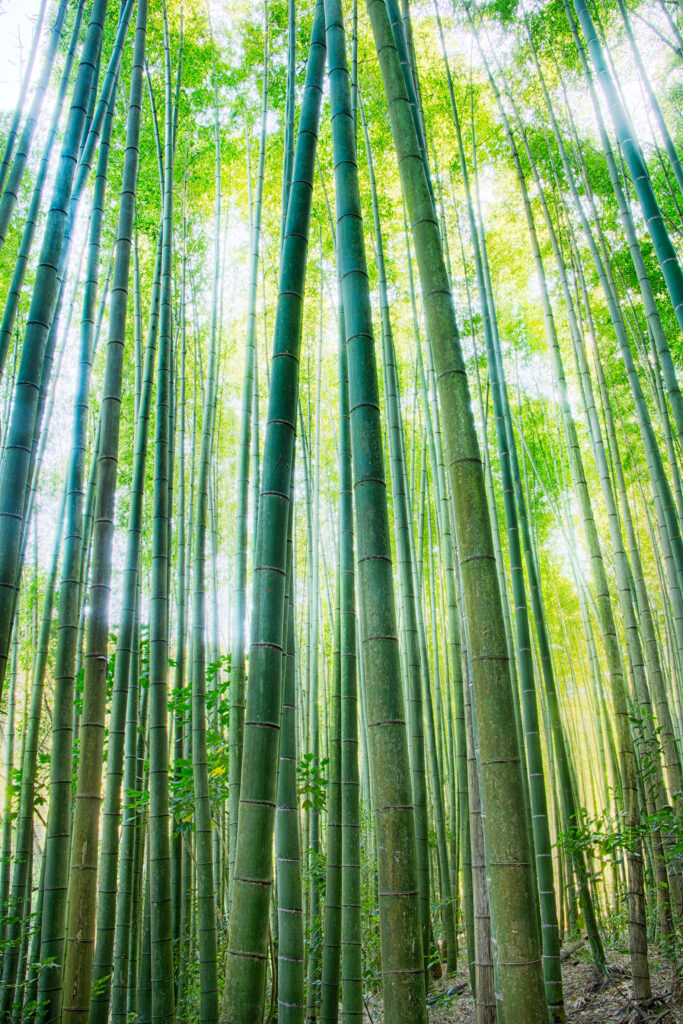For the image of Bamboo Woods near Kyoto, I made seven exposures on my tripod at shutter speeds ranging from 1/2 a second to 20 seconds, varying each exposure by about one EV.
Each exposure was at f/22 and ISO 64; the goal of this kind of exposure sequence is to capture all values of light and dark in front of the camera. In this case, there was quite a dynamic range in the subject, going from bright sunlight at the top to dark shade below the bamboos. It is fair to say that the range of light and darks was greater than the human eye could encompass in a single glance; hence, the scene before me “looked” nothing like the final image.

After finishing my exposure sequence, with the camera still on the tripod, I indulged in a little controlled ICM (in-camera motion), moving the camera up and down in the vertical direction. For these exposures I used my best guess at a normative exposure (about 8 seconds at f/64 and ISO 64).
To make the blend that became the final image, I ran my seven original exposures through Nik HDR Efex. Next, I added in about 50% of the 10 second exposure. Finally, I emphasized some of the more impressionistic areas (mostly in the sky) by blending in a bit of one of the ICM images.
As I said, the final image looked like nothing I could see on the spot, so this kind of photography really does require a fair amount of experience in order to previsualize the final possibilities with clarity.